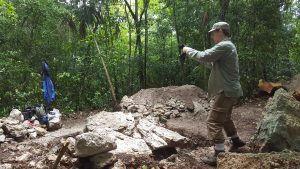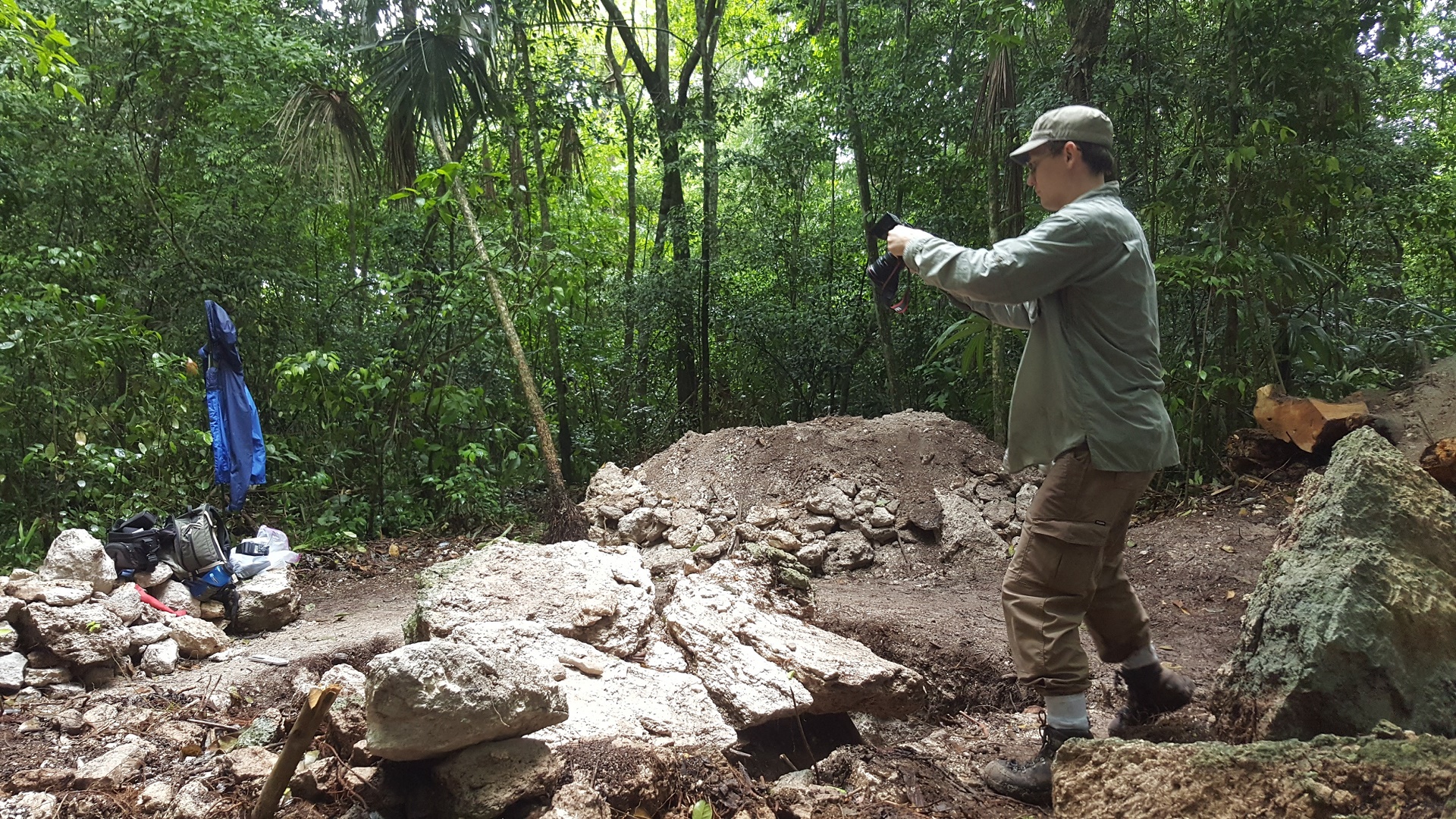
An anthropologist at The University of Alabama is part of a team of researchers who show brutal warfare in Mayan civilizations occurred earlier than previously thought.
Evidence of extreme warfare tactics in the Maya lowlands, during a time described as a peak in prosperity and artistic sophistication, is described in a paper published online this week in Nature Human Behaviour. This research suggests the Maya engaged in violent warfare that resulted in widespread destruction of a city much earlier than previously thought.
Dr. Alexandre Tokovinine, UA assistant professor of anthropology, is a co-author on the paper. He participated in the survey of the Maya archaeological site of Witzna, helping identify defensive features along with documenting and studying monuments.
Maya warfare during its Classic period, from 250 A.D. to 950 A.D., has been viewed as ritualized and limited in scope. However, scholars have interpreted evidence of violent warfare in the Terminal Classic Period, from 800 A.D. to 950 A.D., as an escalation that catalyzed the collapse of the Maya civilization.
The dominant view of Maya warfare has couched it as a prestige-boosting exercise, Tokovinine said. Strict rules of engagement dictated war as capturing high-value nobles for political humiliation or ransom for resources while essentially leaving local people and lower-level leaders in place, he said.
Total warfare, where military campaigns target everyone and everything, is widely believed to happen in Mayan civilization during the last century of the Classic period, or Terminal Classic period, as overpopulation and drought led to intense competition of resources such as irrigated and terraced fields, gardens and managed forests
“Our findings challenge this notion as they show that a site could be wiped off the map and its population displaced for political reasons and without any connection to overpopulation or resource availability,” Tokovinine said. “Quite the opposite, our findings show willingness to eliminate valuable resources for political reasons.”
The authors analyzed a hieroglyphic inscription found at Naranjo — a Classic Maya city south of Witzna in what is now northern Guatemala — that states that on May 21, 697 A.D., Witzna burned for a second time.
They then linked this inscription to paleoenvironmental evidence from a lake adjacent to Witzna with a distinct charcoal layer resulting from a substantial fire event during the last decade of the 7th century. Archaeological evidence also supported this link, as evidenced by widespread destruction and burning of the major monuments and buildings across Witzna. Sediment analysis suggests a dramatic reduction of land use following this total warfare event.
The findings show the people of Naranjo were not interested in extracting tribute or high-value captives from Witzna. The military campaign eliminated the city, resettling its people.
“We can now offer a much more sober interpretation of other textual references at Naranjo, which effectively describe a campaign of massive destruction aimed at securing Naranjo’s dominance in the region once and for all,” Tokovinine said.
The work was led by Dr. David Wahl with the U.S. Geological Survey and the University of California, Berkley, with assistance by Tokovinine, Dr. Lysanna Anderson with the USGS, and Dr. Francisco Estrada-Belli with Tulane University.
